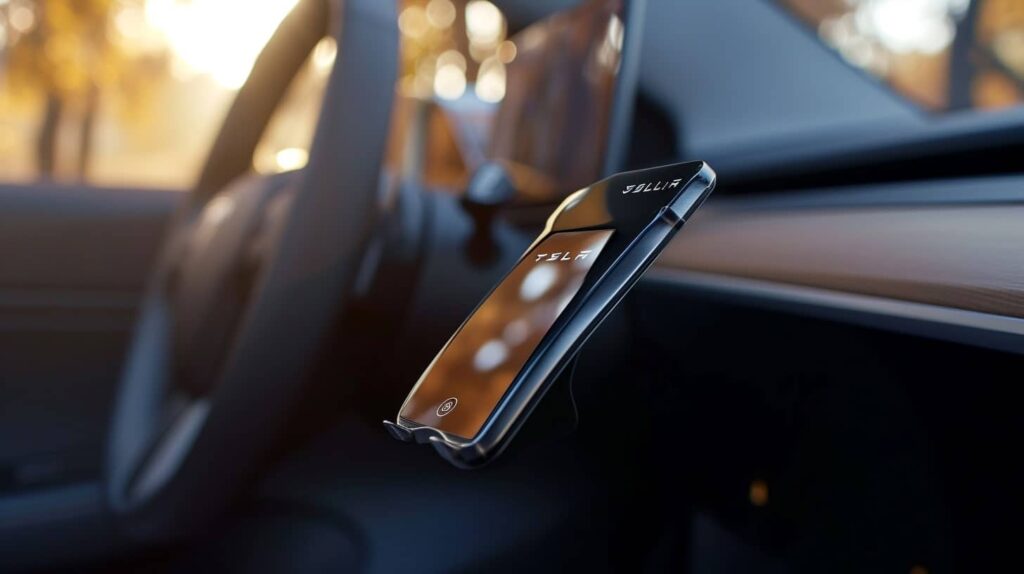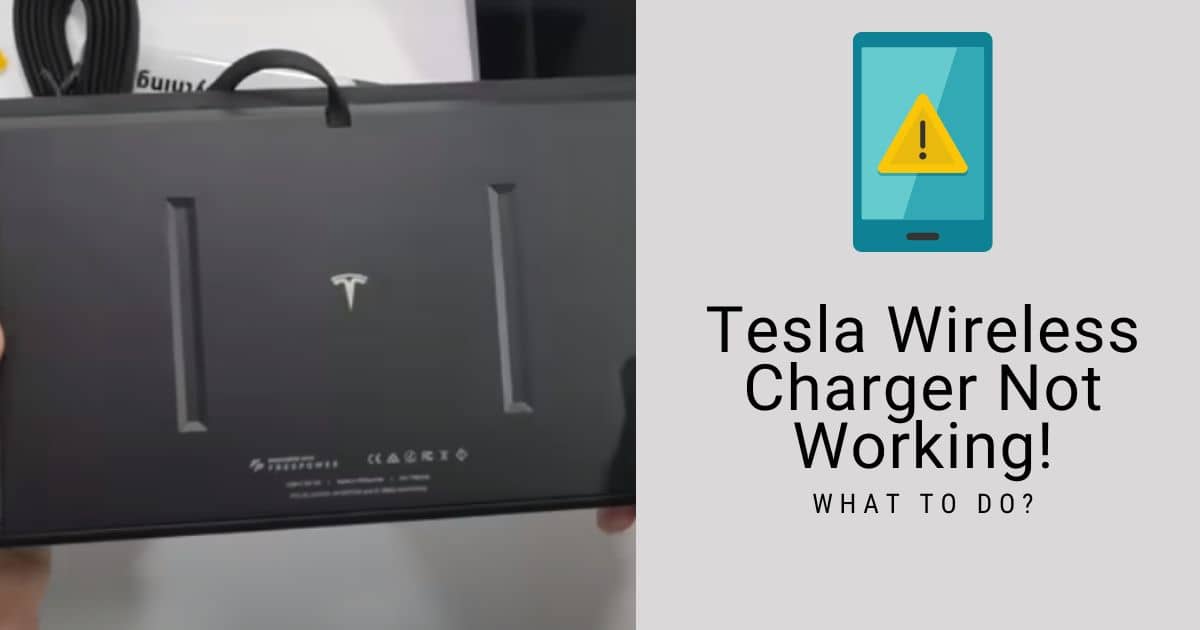Wireless charging is now a common feature for vehicles, and Tesla is no exception. It has a wireless charger built into the front console that delivers 15W of charging power. With this feature, charging your phones on the go is effortless. But sometimes, the feature seems not to work.
So, why is the Tesla wireless charger not working? The most common reason is using incompatible phones. If there is a thick case on the phone, it might not charge. Placing the phone correctly is a must for the wireless charger to work. Sometimes, it can be an issue with the charger itself.
Let’s find out the reasons why the wireless charger in your Tesla doesn’t work and get the solutions.
Tesla Wireless Charger Is Not Working: Reasons and Solutions

Tesla vehicles come with a Qi wireless charging pad. It is pronounced “chee” in Chinese. Qi is a standard wireless charging method used by most electric vehicle manufacturers. In this method, the wireless charger uses an inductive method to generate power in the copper coil inside the device.
Many modern smartphones and tablets have a wireless charging feature built-in. So, you can turn your Tesla on and keep the phone on the wireless charging pad to charge the device.
However, this feature has some limitations that can create charging issues.
Let’s get into the problems.
1. The Phone Doesn’t Support Qi Wireless Charging
Tesla clearly states in their user manual that the wireless charger in Tesla can only charge a Qi-enabled phone. Even if your smartphone has the wireless charging feature, it might not get charged in Tesla.
It should have a Qi-enabled charging system to be compatible with the vehicle’s charging pad.
What to Do?
- Again, check the device specifications. If it is not Qi-enabled, it won’t charge on the wireless charger.
- You can try charging another device that is Qi-enabled. If that device charges normally, there is no problem with the Tesla wireless charger.
The sentence you provided is grammatically correct. However, it could be improved for clarity and effectiveness. Here’s a revised version:
If you want to learn more about charging issues with Tesla vehicles, be sure to check out our guide on Tesla charging hazards for valuable insights.
2. Your Phone Case Is Obstructing the Charging
People use various types of phone cases these days. Some of these cases have a pretty thick design. The thickness of the phone case hinders the wireless charging process. As a result, the wireless phone charger in your Tesla might not work.
The same happens when you use a metal phone case. The metal can interfere with the charging process. Remember, the phone’s charging pad and the vehicle’s charging pad should be closely connected for the wireless charger to work.
What to Do?
- According to Tesla, you should not have the case on the phone while charging, especially if it is too thick or made of metal.
- If you use such phone cases for the phone’s safety, remove the case while charging. The wireless charger should work fine in that case.
3. Objects Between the Phone and the Charger
Unless the phone is in direct contact with the wireless charger, it won’t charge properly. We often tend to place things like key cards, credit cards, key rings, etc., in the front console. If you place the phone on top of such objects, they will block the wireless charging process.
There should be no paper or other objects between the phone and the wireless charger.
What to Do?
- Remove any objects from the front console that may block the wireless charging process. You can only use that space as temporary storage when no device is using the wireless charger.
4. The Phone Isn’t Positioned Correctly
For a device to charge on the wireless charger properly, you should align it with the charger. Your device probably comes with a marking that shows the wireless charging area.
This area should be directly on top of the wireless charger’s center. If both the coils aren’t aligned properly, the device may not charge.
What to Do?
- Always try to place the phone in the middle of the wireless charger. Don’t place it on the edges.
- Sometimes, moving the phone a bit can create better contact. Try moving the phone in a circular motion until you find the right spot.
5. The Wireless Charger Has Problems
The wireless charging pad in the vehicle also needs power to deliver it wirelessly. It is plugged into a USB port in the vehicle. If there is a problem with the connection or the electrical system of the vehicle, it won’t charge any device.
You can be sure of the problem by placing other Qi-enabled phones on the charger. If none of them gets charged, the problem is probably with the charger. It can also have physical damage from objects inside the cabin.
What to Do?
- Inspect the charger’s condition. Then, check the electrical connection. You can unplug the USB and plug it again.
6. You Are Outside the Vehicle
The wireless charger will only work as long as the vehicle is turned on and you are inside. If you step out, it will stop charging the device.
What to Do?
- Stay inside the vehicle while charging the phone. You can activate the Sentry mode if you want to charge the phone after exiting the car.
FAQs
The following answers to some frequent questions can help you.
Of course. If the battery level is below 20%, the wireless charger will not charge any device.
No. The wireless charger will be turned on automatically after turning the vehicle on. You need to be inside the car for this.
The iPhone may be an older model that doesn’t support wireless charging. There can be other reasons, as mentioned above.
Final Thoughts
As convenient as it gets with the wireless charger, the quirks are also there. The wireless charger in your Tesla might not always work as desired. So, why is the Tesla wireless charger not working? An incompatible phone, large or metal phone case, etc., are the most common reasons.
There can also be other obstructions. Sometimes, the wireless charger itself can be faulty or damaged. So, you should find out the exact reason behind the problem and take steps to solve it. Unless the wireless charger works correctly, your phone may not survive those long days.

I am an experienced guide in electric mobility, offering clear and expert guidance for those venturing into the world of electric vehicles.
Through collaborations, research, and hands-on experience, I navigate readers through the evolving landscape of smart automobile technologies and the significance of renewables.

